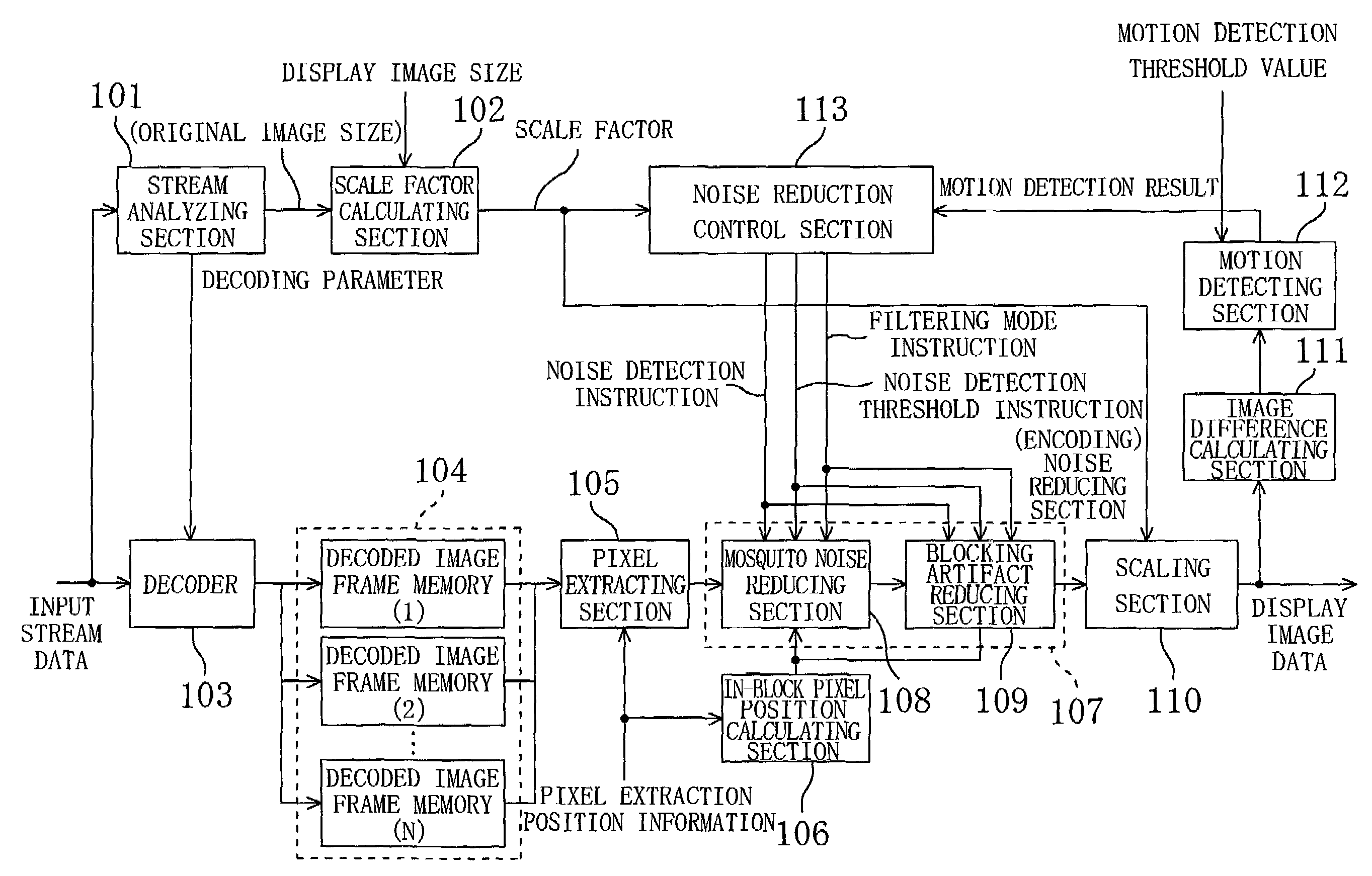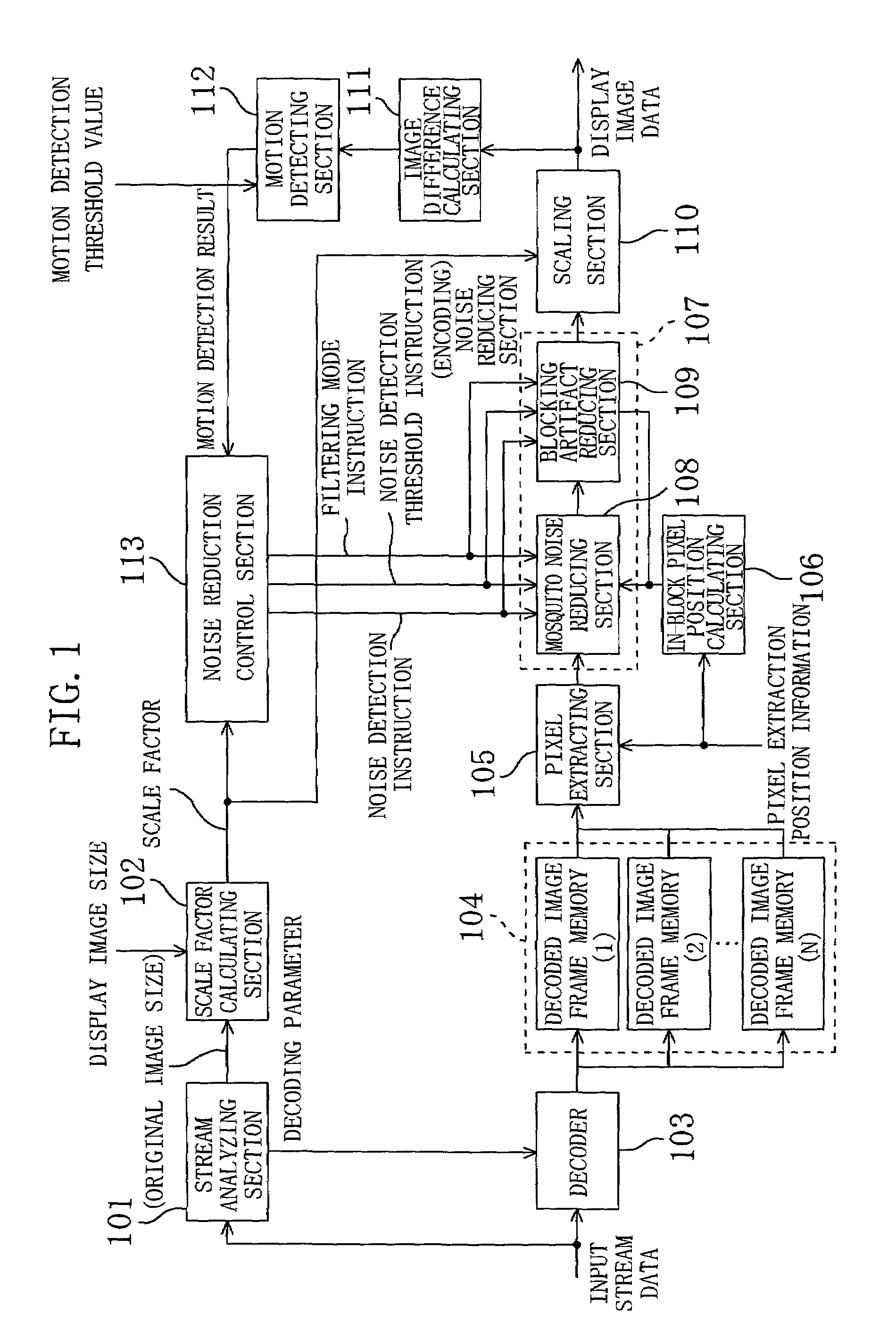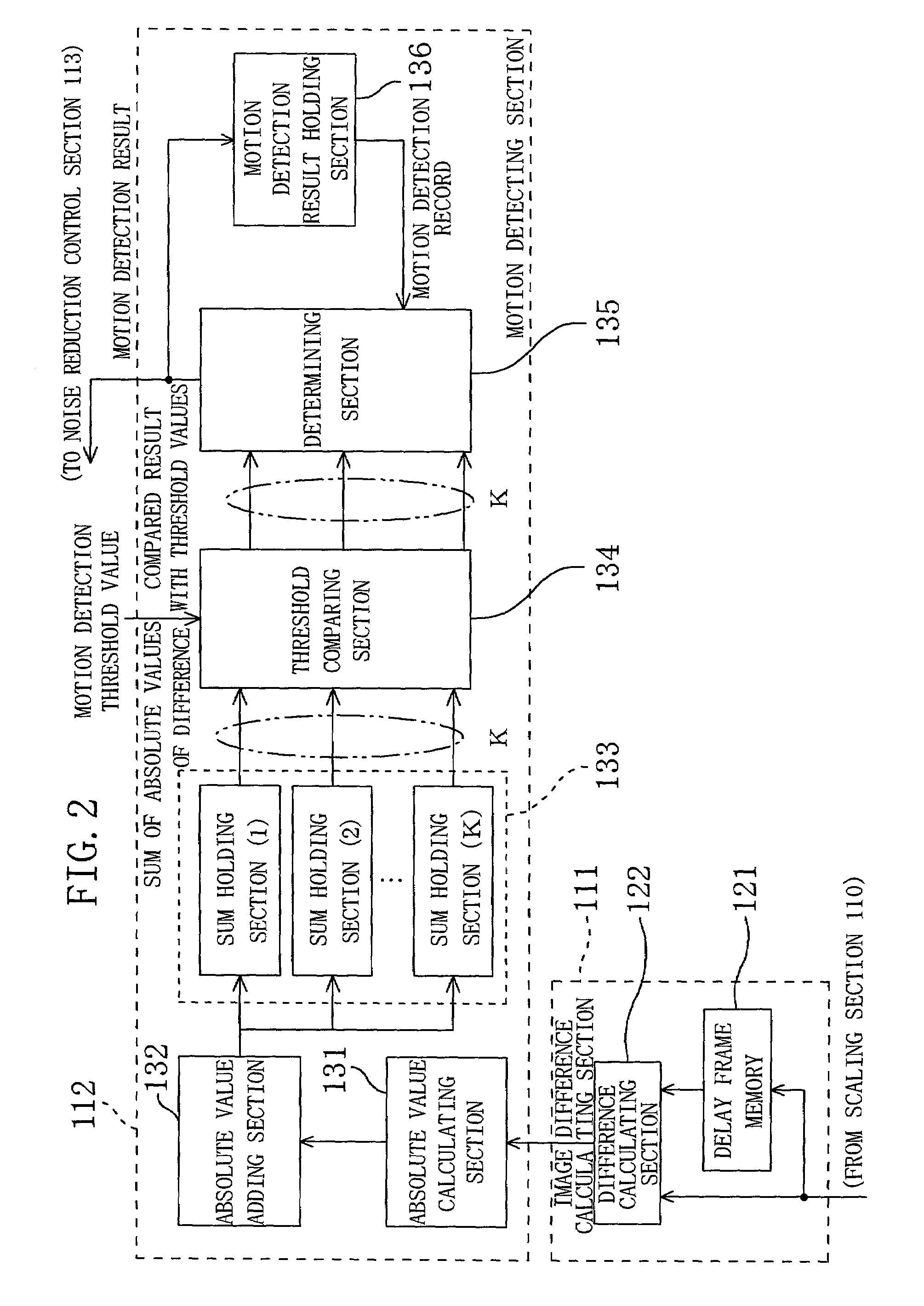Noise reducing apparatus and noise reducing method
a noise reduction and noise reduction technology, applied in the field of noise reduction apparatus, can solve the problems of encoding noise, image quality degradation more or less, and the quality of the material image itself is degraded, so as to reduce the noise of image data encoding, reduce the noise of noise reduction characteristics, and control the effect of noise reduction
- Summary
- Abstract
- Description
- Claims
- Application Information
AI Technical Summary
Benefits of technology
Problems solved by technology
Method used
Image
Examples
first embodiment
[0047]FIG. 1 is a block diagram showing the structure of a noise reducing apparatus according to the first embodiment of the present invention. In FIG. 1, a stream analyzing section 101 analyzes input stream data (i.e., encoded image data), and outputs a decoding parameter required for decoding. Based on the stream data, the stream analyzing section 101 obtains image size (original image size) for output.
[0048]A scale factor calculating section 102 calculates a scale factor of the image based on the original image size received from the stream analyzing section 101 and the actual display image size. The display image size may either be preset according to, e.g., a display device, or may be specified by operation of the user.
[0049]A decoder 103 decodes the input stream data based on the decoding parameter obtained by the stream analyzing section 101, and outputs the decoded image data.
[0050]A frame memory 104 (image memory) is a decoded image frame memory for holding N frames of the ...
second embodiment
[0079]The first embodiment shows the example in which the noise reduction characteristics are controlled according to both the scale factor and the degree of motion of the image. However, the present invention is not limited to this. For example, as shown in FIG. 4 or 5, the noise reduction characteristics may be controlled according to either the scale factor or the degree of motion of the image. Note that, in the following embodiments, elements having the same function as that of the first embodiment are denoted with the same reference numerals, and description thereof is omitted.
[0080]For example, as shown in FIG. 4, the noise reduction control section 113 of the first embodiment may be replaced with a noise reduction control section 213 that outputs a noise detection instruction, a noise detection threshold instruction and a filtering mode instruction based only on the scale factor output from the scale factor calculating section 102. In this case, the image difference calculati...
third embodiment
[0083]As shown in FIG. 6, the noise reducing apparatus of the third embodiment includes a noise reduction control section 413 including a noise detection parameter generating section 441, instead of the noise reduction control section 113 including the noise detection parameter generating section 141 in the first embodiment. In response to a still-state notification signal, the noise detection parameter generating section 441 makes a noise detection instruction “valid” regardless of the motion detection result, and outputs a noise detection threshold instruction for the still state (Note that, when no still-state notification signal is applied (when the still-state information signal is “invalid”), the noise reduction control section 413 operates in the same manner as that of the noise reduction control section 113). The still state herein refers to the state in which the image data held in the frame memory is repeatedly read for display. More specifically, in the still state, there...
PUM
 Login to View More
Login to View More Abstract
Description
Claims
Application Information
 Login to View More
Login to View More - R&D
- Intellectual Property
- Life Sciences
- Materials
- Tech Scout
- Unparalleled Data Quality
- Higher Quality Content
- 60% Fewer Hallucinations
Browse by: Latest US Patents, China's latest patents, Technical Efficacy Thesaurus, Application Domain, Technology Topic, Popular Technical Reports.
© 2025 PatSnap. All rights reserved.Legal|Privacy policy|Modern Slavery Act Transparency Statement|Sitemap|About US| Contact US: help@patsnap.com



